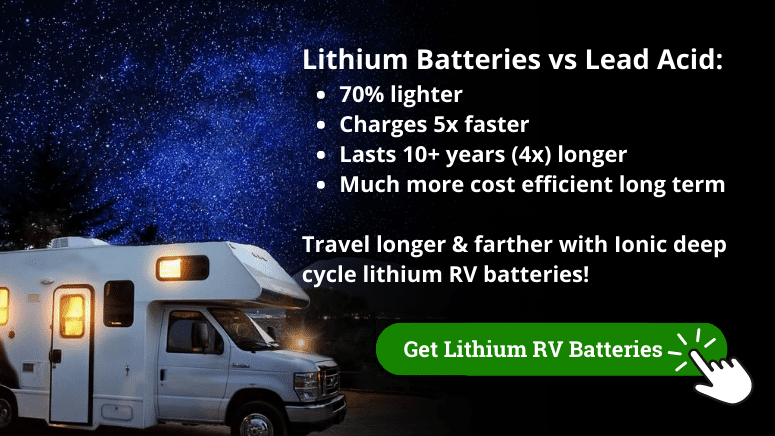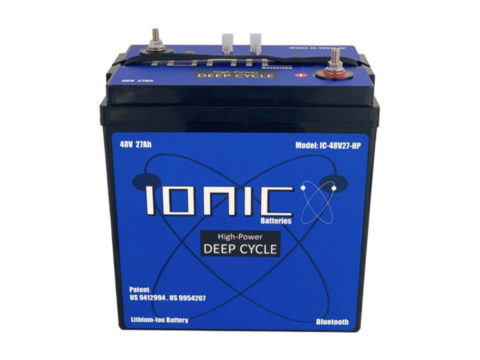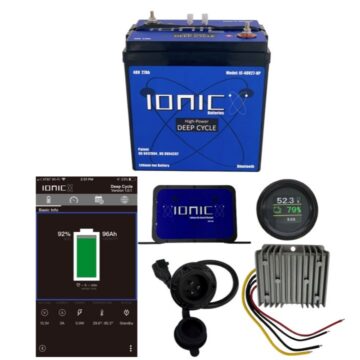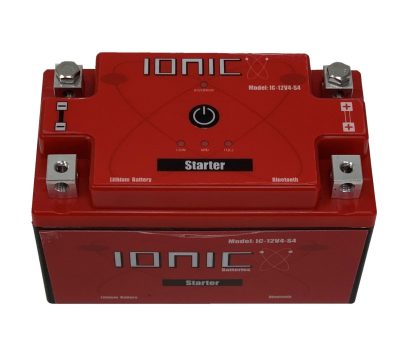Did you know you can improve your RV in an instant, just by switching to lithium batteries? In this post, we’ll tell you why an RV lithium battery conversion is essential, and explain how to do it.
Why Do I Need An RV Battery Upgrade?
If you’ve been using lead acid, AGM, or gel batteries in your RV, you’re probably aware they’re the cheapest option. But they come with caveats like:
- Short lifespan (4-6 years)
- Need a lot of maintenance and watering (especially flooded lead acid batteries)
- Susceptible to corrosion and leaks
- Heavy (a lead acid RV battery weighs around 65 pounds)
- You can only use about 50% of their total capacity.
- They’re not partial charge tolerant
- Can experience voltage sag.
Granted, sealed lead-acid batteries like gel and AGM offer slight improvements. But the basic chemistry remains the same.
For an RV battery upgrade, you may want to switch to a new chemistry type: lithium. When you think of lithium, you might think of phone batteries, or the kind with dangerous cobalt. But that’s not what we’re talking about here. For your RV, you need a lithium iron phosphate-oxide battery known as LiFePO4.
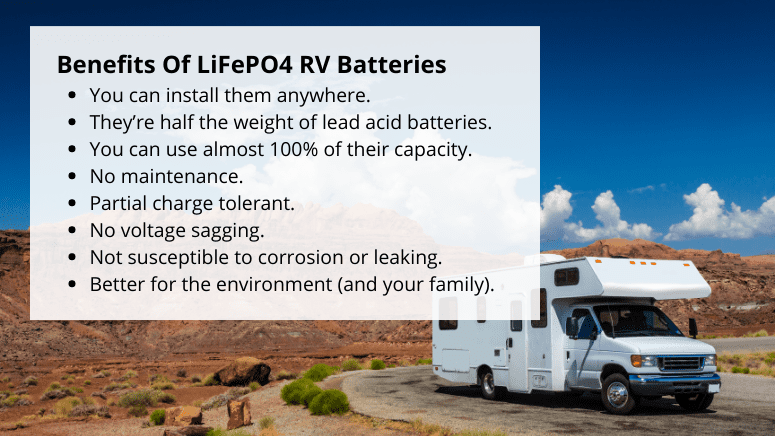
Benefits Of LiFePO4 Batteries For Your RV
At some point during your battery search, maybe you Googled “LiFePO4 RV batteries” and balked at the price point. Don’t close the door on them just yet. Let us explain why they’re actually a better investment than lead acid.
Lithium RV batteries have the longest lifespan of any battery type available. We’re talking 10-12 years minimum. Or maybe more, depending how often you use them. A battery’s lifetime is measured in cycles, and LiFePO4 batteries are rated to last around 5,000 partial etyhcycles. Compare that to lead acid’s measly 400 cycles. It’s like comparing the lifespan of an elephant to that of a fly.
At the very least, your battery will last 4 times longer. But you won’t pay 4 times the price.
Additional Benefits of Converting RV to lithium battery:
- You can install them anywhere. Unlike lead acid batteries, lithium batteries don’t contain water or acid. You can install them sideways or upside-down with no problem. Also, they can stay inside your RV without ventilation.
- They’re half the weight of lead acid batteries. This means you can increase your RV’s power capacity without weighing it down too much.
- You can use almost 100% of their capacity.
- No maintenance, no need for water/electrolytes.
- Partial charge tolerant.
- No voltage sagging.
- Not susceptible to corrosion or leaking. Better for the environment (and your family).
- Better performance in extreme temperatures. (Some lithium batteries also include heaters so you can charge with ease in winter).
- Our lithium RV batteries come with Bluetooth capabilities. You can view battery stats on your phone. See how much power you have left, how much longer your battery will take to charge, and more.

RV Lithium Battery Conversion: How To
First of all, you’ll be happy to know that our LiFePO4 batteries are drop-in ready. That means you can install them right where your previous house batteries were. They have the same connections as lead acid batteries.
So, if you already know what size battery you need, RV lithium battery conversion is as simple as switching one battery out for another.
How To Find The Right Size For Your RV Battery Upgrade
If you’ve bought a new RV, or are unsure what size you need, start by identifying the voltage of your power system. Most RVs have 12V or 24V systems. So your best choice is a 12V battery (or batteries).
Next, determine what battery capacity you need. Lithium LiFePO4 RV batteries are available in 50Ah (best for a pop-up with low power demands) to 300Ah (often used in Class A motor coaches).
To determine how many amp hours you need, make a list of everything you want to power in your RV. Add up the power demand of each item.
If you find that one battery isn’t enough, you can connect your lithium batteries in parallel or in series. Here’s a helpful resource explaining how to accomplish this.
Need more information? Check out our helpful Lithium RV Battery Chart.
Charging Your Lithium Battery
Our Ionic lithium RV batteries are plug-and-play. They don’t require maintenance, so you could almost just connect them and forget them. Well, almost. There’s one major difference between lead acid and lithium RV batteries that you must pay attention to: charging.
You might be used to having to charge your lead acid when it’s down to 50% capacity. But those days are over! There’s no need to charge your lithium battery until (nearly) the last drop of power has petered out.
Other things to note when charging:
- It’s best to use an Ionic lithium charger. This protects your battery and extends its lifetime. A smart lithium charger can connect to our Bluetooth app, allowing you to view time left to charge.
- Do not use a lead acid battery charger unless the voltage settings are set to the range acceptable for lithium.
Have questions about RV lithium battery conversion? We’re here to help! Speak with our lithium battery experts now.
If you liked this, you’ll probably enjoy this as well: The Best Battery for Your Camping Adventure: Lithium


